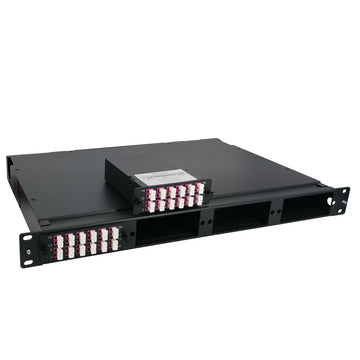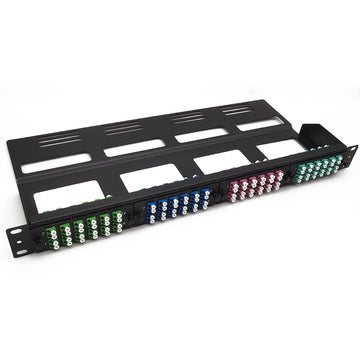SDI, HD-SDI, 3G-SDI, 6G-SDI, 12G-SDI: What are the Differences?
SDI, HD-SDI, 3G-SDI, 6G-SDI, 12G-SDI: What are the Differences?
As application scenarios such as broadcast, live events or so have an increasingly higher standard towards bandwidth, the SDI standard has witnessed contintous evolution. SDI-Serial Digital Interface, widely used in SDI encoders, SDI converters, and other equipment, which has been applied to radio and television fields, and security monitoring. including HD-SDI, 3G-SDI, 6G-SDI, and 12G-SDI, but what are they, and what are the differences though?
What is SDI?
The SMPTE group created the SDI (Serial Digital Interface) digital video interface standard. This serial interface uses one channel to send all bits of the data word and its related data. Serial digital signals must be handled before transmission because of their high data rate.
SDI is a digital video transmission technology that is widely utilized in broadcasting, live events, and other professional settings. It employs two coaxial cords to transmit one digital signal via optical fiber at speeds ranging from 270 Mbps to 12 Gbps. The ptz SDI is a point-to-point interface, which implies that every wire transports data from one appliance to another.
What is HD-SDI?
The standard known as the HD Serial Digital Interface (HD-SDI) is standardized in SMPTE 292M; Although this standard is known as the 1.5 Gb / s interface, the bit rates supported by HD-SDI are actually 1.485 Gb / s and 1.485 / 1.001 Gb/s. OPTCORE provides a wide line of HD-SDI transceiversiver for the special broadcast application.
What is 3G-SDI?
This standard defines a bit-serial data structure, electrical signal, and coaxial cable interface for the transport of signals with a total payload of 5.940 Gb/s or 5.940/1.001 Gb/s. This standard also specifies the electrical and physical characteristics of coaxial cables and connectors. This standard defines several mapping modes for the carriage 2160-line and 1080-line image formats and associated ancillary data into a Single-link 6 Gb/s [nominal] SDI bit-serial interface.
What is 6G-SDI?
The 270 Mb/s data rate is supported by the SD SDI standard. SD SDI employs a clock rate of 27 MHz to deliver low-resolution PAL video at 25 frames per second. In 1994, the ITU-R issued Recommendation BT.656-2, which included the new serial digital interface distinguished in EBU Tech.3267 and SMPTE 259M. It uses non-Zero Reverse (NRZI) encoding and employs 10-bit transmission. It is mainly utilized for 480i and 576i video formats.
What is 12G SDI?
The 12G SDI is a high-resolution, enhanced frame-rate, and high-color commitment SDI standard. It has four times the capacity of HD and can send 12 Gbps, which makes it perfect for 4K 60p. It is especially utilized for 2160p video formats at 60 FPS.
What Is The Difference Between SD SDI vs HD-SDI?
The basic electrical specifications of HD-SDI and SD-SDI are the same, but the transmission bit rate is much higher than that of SD-SDI. Since the ITU-R BT.1120-2 specifies that the luminance sampling frequency of high definition video signals is 74.25 MHz and the sampling frequency of two color difference signals is 37.125 MHz respectively, the basic bit rate of HD-SDI reaches 1.485 Gb / s. Taking into account that the distribution of high-frequency transmission cable parameters affects the transmission of high-definition video signals, the cable length will be greatly reduced.
The data transmission format of HD-SDI is the same as the transmission format of SD-SDI, and the luminance signal Y and the color difference signals Cb and Cr subjected to time-division multiplexing are handled as 20-bit words. Each 20-bit word corresponds to a color difference sample and a luminance sample. The multiplexing modes are: (Cb1Y1), (Cr1Y2), (Cb3Y3), (Cr3, Y4).
3G-SDI, 6G-SDI, 12G-SDI: What’re the Differences?
Here is a brief comparison table of various SDI:
| Cable Type | Bitrates | Video Format |
| SD SDI | 270 Mbps, 360 Gbps, 143 Gbps, and 177 Gbps | 480i, 576i |
| HD HDI | 1.485 Gbps, and 1.485/1.001 Gbps | 480p, 576p |
| 3G SDI | 2.970 Gbps, and 2.970/1.001 Gbps | 1080p60 |
| 6G SDI | 6 Gbps | 2160p30 |
| 12G SDI | 12 Gbps | 2160p60 |
Applications:
3G-SDI System These high-definition video systems are frequently established in problematic locations with a wide range of temperatures, strong vibrations, varying cable run lengths, and electrical disturbance. 3G SDI systems are critical for several applications in ship boards, aerospace, ground vehicles, and surveillance systems.
6G-SDI System The several applications of 6G SDI include supporting 4K digital cinema and ultra-high definition (UHD) television. The webcam suppliers also use 6G SDI systems.
12G-SDI System 12G products are available from a variety of sellers and can be found in converters, film cameras, production switchers, and a rising number of PCIe cards.
Benefits:
3G-SDI System
In a comparison of 12G SDI vs 3G SDI, 3G can transfer a variety of video broadcast, production, and digital film formats down the same cable.
6G-SDI System
- Convenient Installation with only a single cord
- Gives high-quality signal transmission with excellent quality 4K
12G-SDI System
- In 3G SDI vs 6G SDI vs 12G SDI, 12G lessens the system complexity in a 4K pattern.
- It is adaptable and has the potential to handle input and output (bidirectional SDI interface).
Bitrates:
All the digits in the 3G vs 12G SDI, 6G vs 12G vs 3G SDI correspond to video bitrates
- 3G SDI implies that it can transmit nearly 3 gigs of video data a second.
- 6G can deliver about 6 gigs per second.
- 12G can transport approximately 12 gigs per second.
Conclusion
Serial Digital Interface (SDI) has been a cutting-edge technology for several years. It was created for use in harsh environments but then spread to different transport and production areas. Over time, other SDI variants have been developed, but they use similar connectors and provide the same performance.
In short, if you need a high-quality video interface for proficient applications, SDI is a great choice. In addition to this, SDI is suitable for mission-critical applications as it provides uncompressed video, error correction, and less latency.












